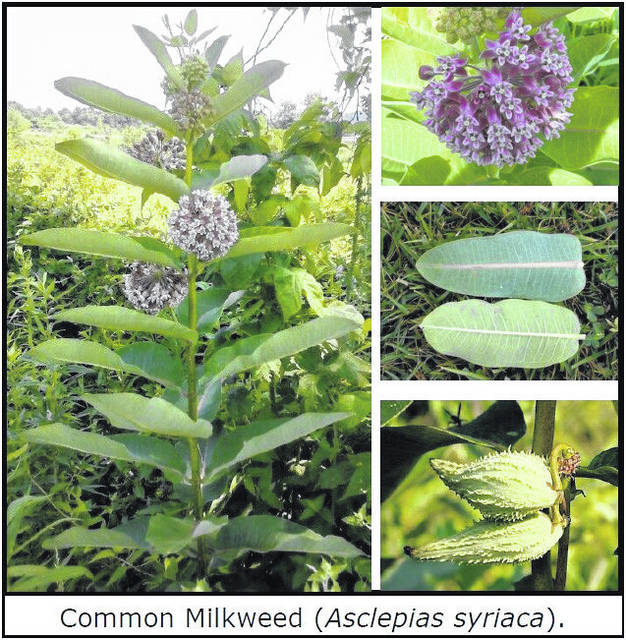
Pollinators such as bees and butterflies are in trouble. Our pollinators have been suffering from population decline primarily due to loss of habitat. Over the past 10 years, there have been several species of pollinators that have vanished from Ohio.
More recently, monarch butterfly populations have plummeted to alarmingly low levels. The monarch population in the eastern U.S. has declined up to 90 percent in the last 20 years. Poor honeybee health is a critical issue also linked to the decline of pollinator habitat.
Pollinators are responsible for about one third of our world-wide food supply. They move pollen from plant to plant resulting in pollination, which is necessary for apples, almonds, and many other fruits and vegetables to bear fruit.
Here in Ohio, the Ohio Pollinator Habitat Initiative was started to inform citizens, landowners, farmers, and government agencies of the importance of pollinators and the habitat they need to survive. Members of the initiative are the core professionals that provide education, outreach, and technical assistance to all that have an interest in pollinators and protecting our food supply. The Ohio Department of Agriculture (ODA), the Ohio Department of Transportation (ODOT), and the Ohio Department of Natural Resources (ODNR) are helping monarchs by adding ideal habitats across the state.
To create monarch habitat, Ohio plans to add millions of milkweed and nectar plants by 2035. Milkweed plants host breeding monarchs, and nectar plants provide food.
“We’re working hard to protect and restore Ohio’s natural resources, and this is just another example,” said Ohio Governor Mike DeWine. “This initiative is not only about the monarch butterfly population but the effect pollinators have on our landscape, agriculture, and economy. State agencies are working together to make a positive impact while also conserving taxpayer dollars.”
“The monarch butterfly is a valuable part of our state’s natural diversity,” said ODNR Director Mary Mertz. “Providing the right habitats will boost monarchs and help other pollinators that are important to Ohio.”
ODNR organizes the collection of milkweed seeds sent around Ohio. The department also educates the public on creating monarch habitat. Since 2014, ODNR has planted milkweed and nectar plants across 58,000 acres of wildlife areas.
“This is ODOT’s contribution to supporting our valuable agribusiness and ecosystem, both of which depend on vital pollinators like the monarch butterfly,” said Jack Marchbanks, director of ODOT. “Our efforts don’t just benefit pollinators, but taxpayers as well.”
ODOT has created 126 pollinator habitats in 47 counties in the last five years. These 1,200 acres, combined with 80,000 acres of reduced highway mowing, provide habitat for pollinators and saved Ohio taxpayers $2.2 million in 2018. ODOT plans to add 125 acres of new pollinator habitat each year going forward.
“Pollinators are an essential component to Ohio’s agricultural industry,” said Dorothy Pelanda, Director of ODA. “Agriculture and food contribute $124 billion to Ohio’s economy each year. Ohio’s vegetables, fruit trees, honey, and hay production are all dependent on pollinators.”
The Ohio Pollinator Habitat Initiative is a collaboration of agencies, organizations, and individuals committed to helping monarch butterflies and pollinators thrive in Ohio by encouraging conservation actions by public and private landowners and across diverse urban and rural landscapes.
Fayette Soil & Water Conservation District (FSWCD) will once again be the local collection center for common milkweed seeds. Make sure that before you collect seed, you become familiar with common milkweed to avoid harvesting pods from similar plants such as hemp dogbane and swamp milkweed.
Locate common milkweed stands for seed pod collection in areas such as pastures, meadows, along railroad tracks, along bike paths, agricultural field margins, vacant land, cultivated gardens, and parks. Establish ownership of the land and make sure to get landowner permission for monitoring and collecting the seed pods. Arrange for the owner to conserve the stand until the seed pods are ripe and ready to harvest. Also, make sure the seeds inside the pod are mature.
Seed pods from common milkweed should be collected when the pods are dry and gray or brown in color. If the center seam pops with gentle pressure, they can be harvested. Don’t collect pods that are already open, as they might be infested with insects. It is best to store pods in paper bags because in plastic bags moisture can collect and allow mold to develop. The collection period runs from Sept. 1 to Oct. 31.
The Fayette SWCD office is located in the Fayette County Agricultural Center, 1415 US 22 SW, Suite 500 Washington Court House.


